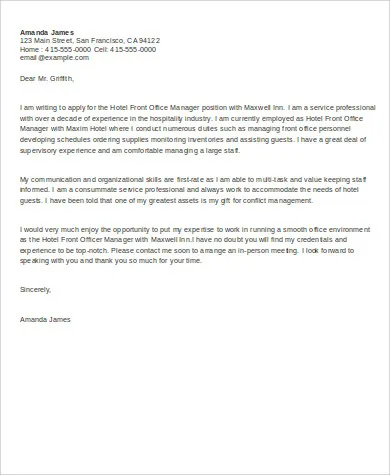Crafting a Compelling Office Job Cover Letter
Securing an office job often hinges on a well-crafted cover letter. In the competitive job market, a compelling cover letter can be the key to unlocking opportunities. It’s your first introduction to a potential employer, setting the stage for the impression you make. A strong cover letter highlights your skills, experience, and enthusiasm, setting you apart from other applicants. This guide delves into the essential components and strategies for creating a cover letter that grabs attention and increases your chances of landing that coveted office job. Whether you are a recent graduate or a seasoned professional, mastering the art of cover letter writing is a critical skill.
Understanding the Purpose of a Cover Letter
The primary purpose of an office job cover letter is to introduce yourself and express your interest in a specific position. It offers a platform to elaborate on your resume, providing context and depth to your qualifications. Unlike a resume, a cover letter allows you to demonstrate your personality, communication skills, and genuine interest in the company and the role. It provides an opportunity to connect with the hiring manager on a personal level, showcasing how your skills and experiences align with the job requirements and the company’s values. A well-written cover letter serves as your advocate, convincing the employer to invite you for an interview.
Highlighting Your Skills and Experience
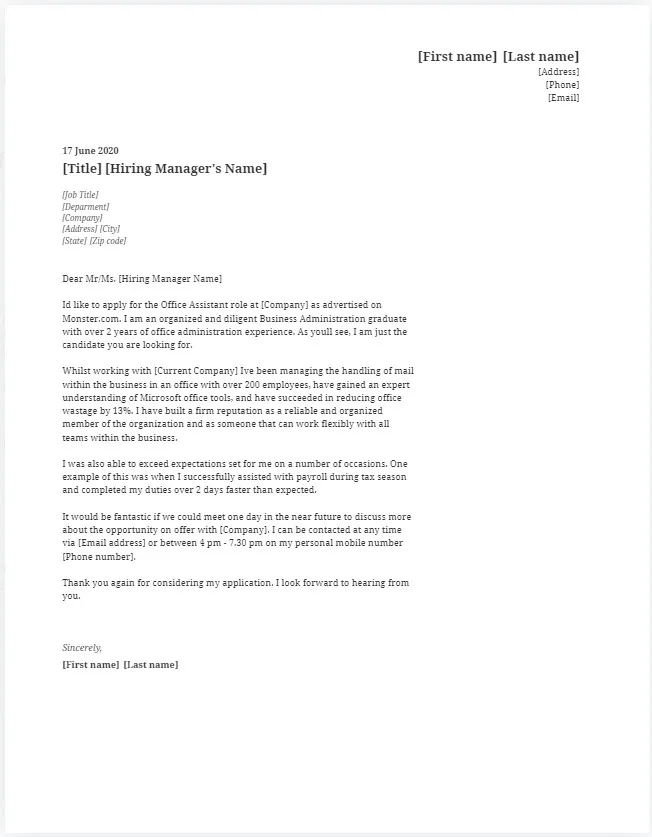
Your cover letter should strategically highlight the skills and experiences most relevant to the office job you’re applying for. Carefully review the job description and identify the key requirements, such as administrative skills, communication abilities, or proficiency in specific software. Then, use specific examples from your past experiences to demonstrate how you possess these skills. Quantify your achievements whenever possible. For example, instead of saying, ‘Managed office correspondence,’ you could write, ‘Managed and responded to an average of 50 emails daily, ensuring timely and professional communication.’ This approach not only showcases your capabilities but also provides tangible proof of your competence.
Essential Elements of a Cover Letter for Office Jobs
A successful office job cover letter consists of several essential elements that work together to create a strong impression. Each part plays a crucial role in conveying your qualifications, interest, and professionalism. From the clear presentation of your contact information to the compelling closing, these elements must be present for the letter to be effective. These are not only important but are also the building blocks of a successful application. Focusing on them will increase your success rate and help land the job.
Contact Information and Date
Begin your cover letter with your contact information, including your name, address, phone number, and email address. This allows the employer to easily reach you if they’re interested in your application. Include the date of the letter below your contact information. Ensure that your contact information is accurate and up-to-date, so you don’t miss any opportunities. Ensure that your email is professional and the information provided is correct.
Professional Salutation
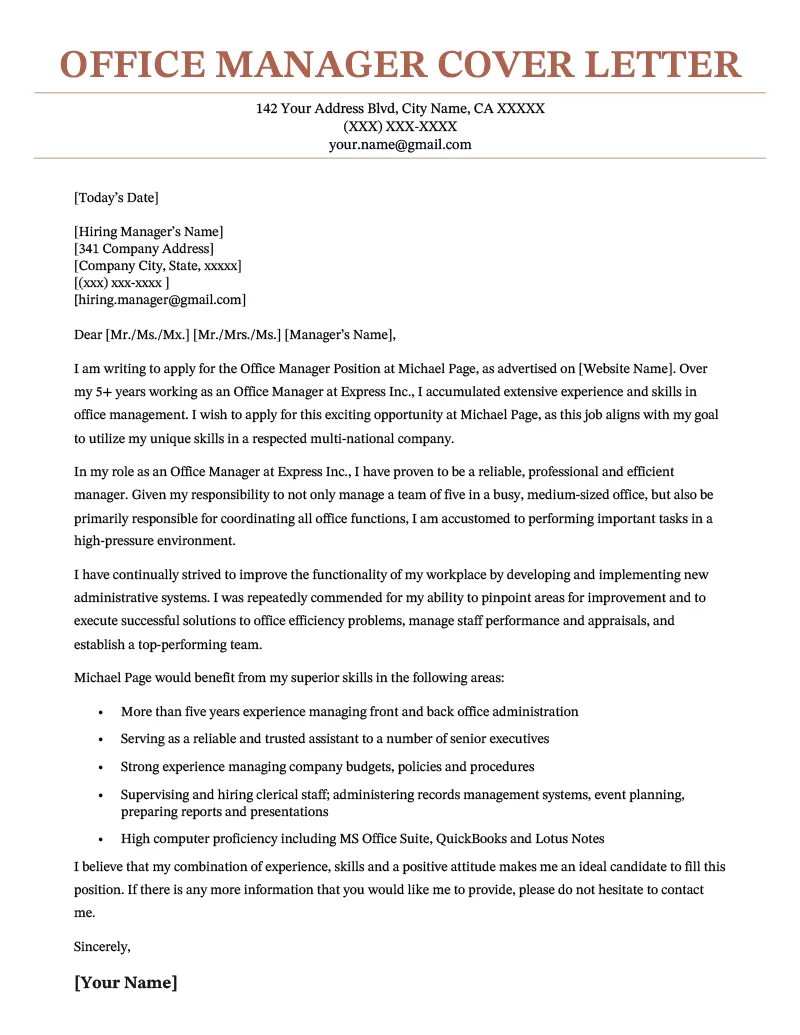
Address your cover letter to the hiring manager, if possible. Research the name of the person in charge of hiring and use it, as this shows your attention to detail and your initiative. If you’re unable to find a specific name, use a professional salutation like ‘Dear Hiring Manager.’ Avoid generic salutations like ‘To Whom It May Concern’ as they appear less personal. This attention to detail can greatly help your success and ensure that you’re taken seriously.
Body Paragraph 1 Grab Attention
The first paragraph should immediately capture the reader’s attention. State the specific position you’re applying for and where you found the job posting. Briefly mention why you’re interested in the company and the role. Demonstrate your enthusiasm and show that you are a good fit for the office. This opening sets the tone for the rest of your letter, so make it compelling and concise, focusing on the main points. The goal is to make them want to keep reading.
Body Paragraph 2 Showcasing Skills
In the subsequent paragraph(s), highlight your skills and experience that directly relate to the job requirements. Refer to the job description and tailor your examples accordingly. Use strong action verbs to describe your accomplishments and quantify your achievements whenever possible. Emphasize how your skills align with the company’s needs and how you can contribute to their success. The second paragraph is where you show how your skill sets fit the office job you’re applying for. This is your chance to shine.
Body Paragraph 3 Expressing Enthusiasm
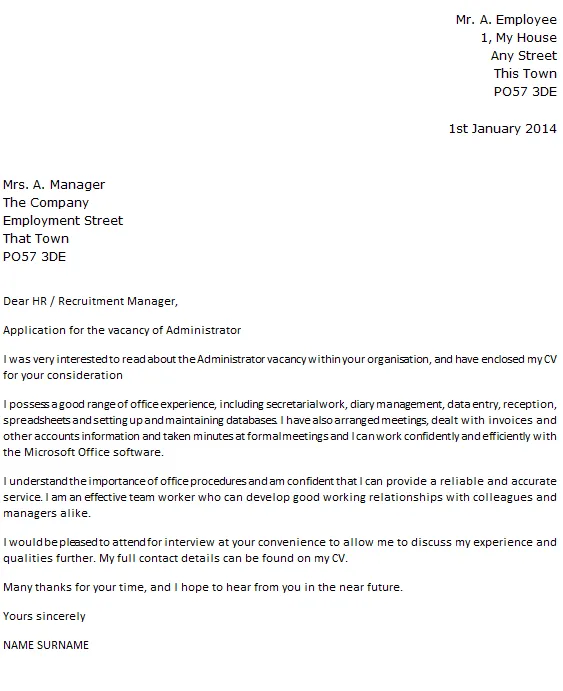
The final body paragraph should express your enthusiasm for the position and the company. Explain why you’re excited about the opportunity and what you hope to achieve. Mention any relevant skills or experiences that will make you a valuable asset to the team. Show that you’ve done your research about the company and understand its mission and values. This is your final chance to impress and stand out from the other applicants. Let your personality shine through.
Formal Closing
End your cover letter with a professional closing. Use a formal closing like ‘Sincerely,’ ‘Best regards,’ or ‘Yours sincerely,’ followed by your full name. Reiterate your interest in the position and thank the reader for their time and consideration. If you are comfortable, you can include a call to action, such as, ‘I look forward to the opportunity to discuss my qualifications further in an interview.’ Ensure your closing is sincere and reflects your respect for the hiring process.
Tailoring Your Cover Letter for Maximum Impact
A generic cover letter will likely end up in the rejection pile. To make a real impact, customize your letter for each job application. This shows the hiring manager that you’ve taken the time to understand the role and the company’s needs, which significantly increases your chances of being considered. Here’s how to tailor your cover letter and make it personal.
Researching the Company
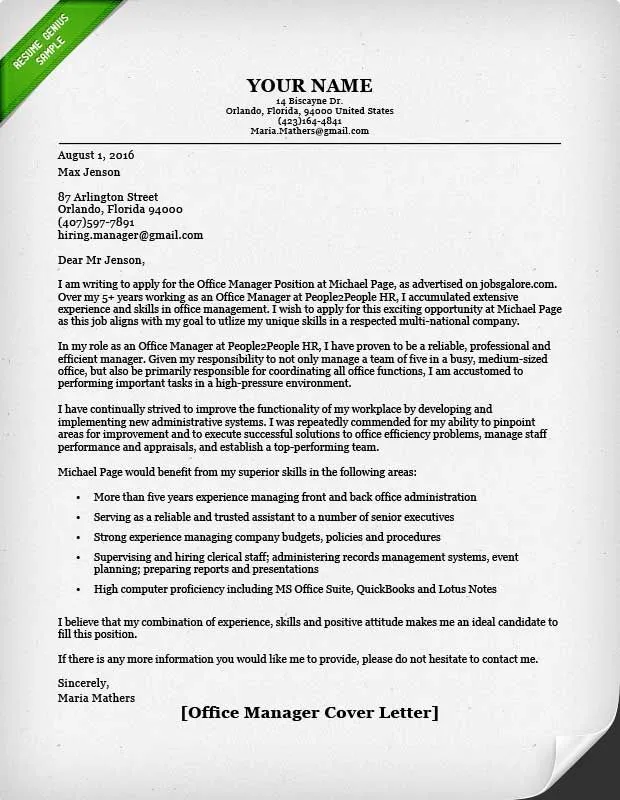
Before you start writing, research the company thoroughly. Visit their website, read about their mission and values, and understand their products or services. Tailor your cover letter to reflect your understanding of the company. Mention specific projects or initiatives that resonate with you. Demonstrate that you have taken the time to understand the company and its culture. This can show that you will be a good fit for the company.
Customizing Your Letter
Avoid using a generic template. Instead, customize your cover letter to match each specific job. Review the job description carefully and identify the key requirements and keywords. Use these keywords throughout your letter to demonstrate how your skills and experience align with the role. Highlight the skills and experiences that are most relevant to the position. Tailoring your letter will increase your chances of success.
Using Keywords Effectively
Incorporate keywords from the job description into your cover letter. Recruiters and applicant tracking systems (ATS) often scan for keywords. Using relevant keywords will increase the chances of your letter being noticed. However, don’t simply stuff keywords into your letter. Integrate them naturally within your sentences. Focus on the most important keywords related to the role.
Proofreading and Editing for Perfection
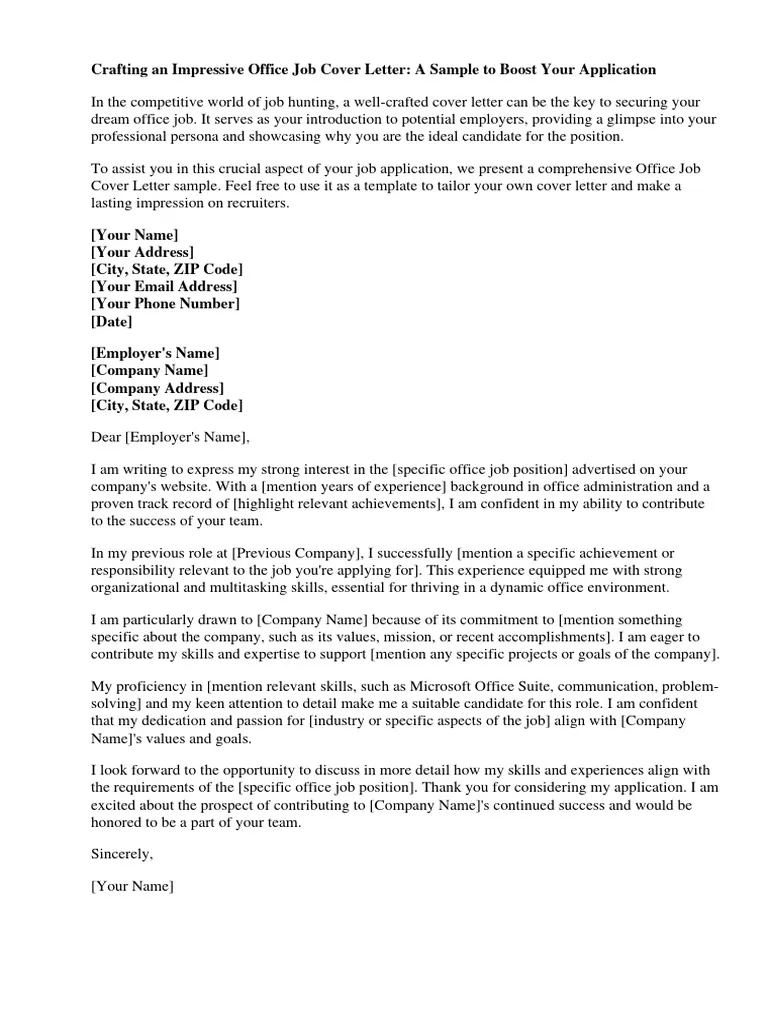
A polished cover letter is free of errors. Proofreading is a crucial step in the writing process. Take the time to review your cover letter carefully for any grammatical errors, typos, or inconsistencies. Ensure the letter flows smoothly and the content is easy to understand. A well-proofread letter demonstrates your attention to detail and professionalism. Consider the help of a friend or colleague to read the letter and provide feedback.
Common Mistakes to Avoid
Several common mistakes can undermine your cover letter. Being aware of these pitfalls will help you avoid making them and improve your chances of getting noticed. Always aim for accuracy, clarity, and professionalism. These mistakes can make your letter less effective, hurting your chances of landing the job.
Grammatical Errors and Typos
Errors in grammar and typos create a negative impression. They indicate a lack of attention to detail and professionalism. Always proofread your cover letter carefully to catch any errors. Use grammar and spell-checking tools. Ask a friend or family member to proofread your letter. A perfect letter shows that you care about every detail.
Generic or Uninspired Content
Avoid generic cover letters that could apply to any job. Tailor your letter to the specific position and company. Show genuine interest and enthusiasm. Provide specific examples of your skills and experiences. A personalized letter will show that you’ve taken the time to understand the role and the company’s needs. Take your time and create something that stands out.
In conclusion, a well-crafted office job cover letter is a powerful tool that can significantly increase your chances of landing a job interview. By following the guidelines outlined in this guide, you can create a compelling cover letter that highlights your skills, experience, and enthusiasm. Remember to tailor your letter to each specific job, proofread it carefully, and avoid common mistakes. With these strategies, you will be well on your way to securing the office job of your dreams.
